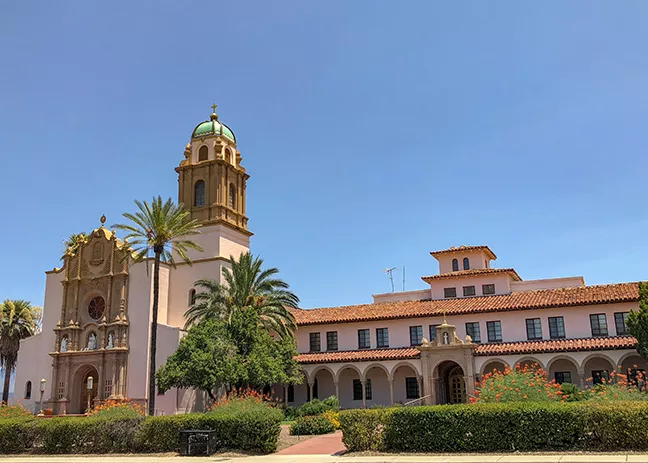After months of negotiations, Councilmember Steve Kozachik and developer Ross Rulney made an agreement over the future of the Benedictine Monastery.
Rulney, who bought the historic sanctuary with plans to build student housing, agreed to a maximum height of 55 feet for apartment buildings on three sides of the monastery with 250 one- and two-bedroom market-rate apartments.
Kozachik said the development around the historic site won't just be a "55-foot box." The agreement includes setbacks from Country Club, public use of the monastery and a preservation component yet to be hashed out. There would also be an advisory design review committee made up of area residents.
But the project still needs to go through a public process which will include going before Mayor and Council for a rezoning or planned amendment approval.
"I'm not gonna lay down in the tracks ahead of you when it goes to planned amendment," Kozachik says he told Rulney. "I'm not going to oppose you, because I think this is a good compromise for the community."
Rulney's original plan included surrounding the monastery with student housing apartments within the current zoning of 40-foot heights and 222 units. He would have used the monastery for additional student apartments, study halls, a commissary and recreational area.
"Given the strong opposition for a student project in this neighborhood and the push back from Ward 6, our project shifted course," Rulney said in an emailed statement. "I appreciate Councilmember Kozachik's willingness to explore options that will allow us to bring a higher quality product that is more complementary to the surrounding neighborhood."
Kozachik says Rulney and his financial partner in New York had a proposal drawn up that fit 802 beds in "student efficiency" housing and would have turned the monastery into a "clubhouse."
"They could do that tomorrow and nobody has a voice in any part of the conversation," Kozachik said.
The original proposal Rulney's architects with Poster Frost Mirto showed to the public, in March, prohibited student housing but included heights of 88 feet. After fierce opposition from neighborhood residents, architects presented a revised proposal at the end of June that included a maximum height of 66 feet. Kozachik and vocal neighbors who showed up at a public meeting on June 28 were still in opposition.
Rulney recently acquired a lot directly north of the monastery property, which would also include a 55-foot apartment building.
The proposal will go to City of Tucson Planning and Zoning Commission for a study session on Sept. 12, with a public hearing at a later date yet to be set.








